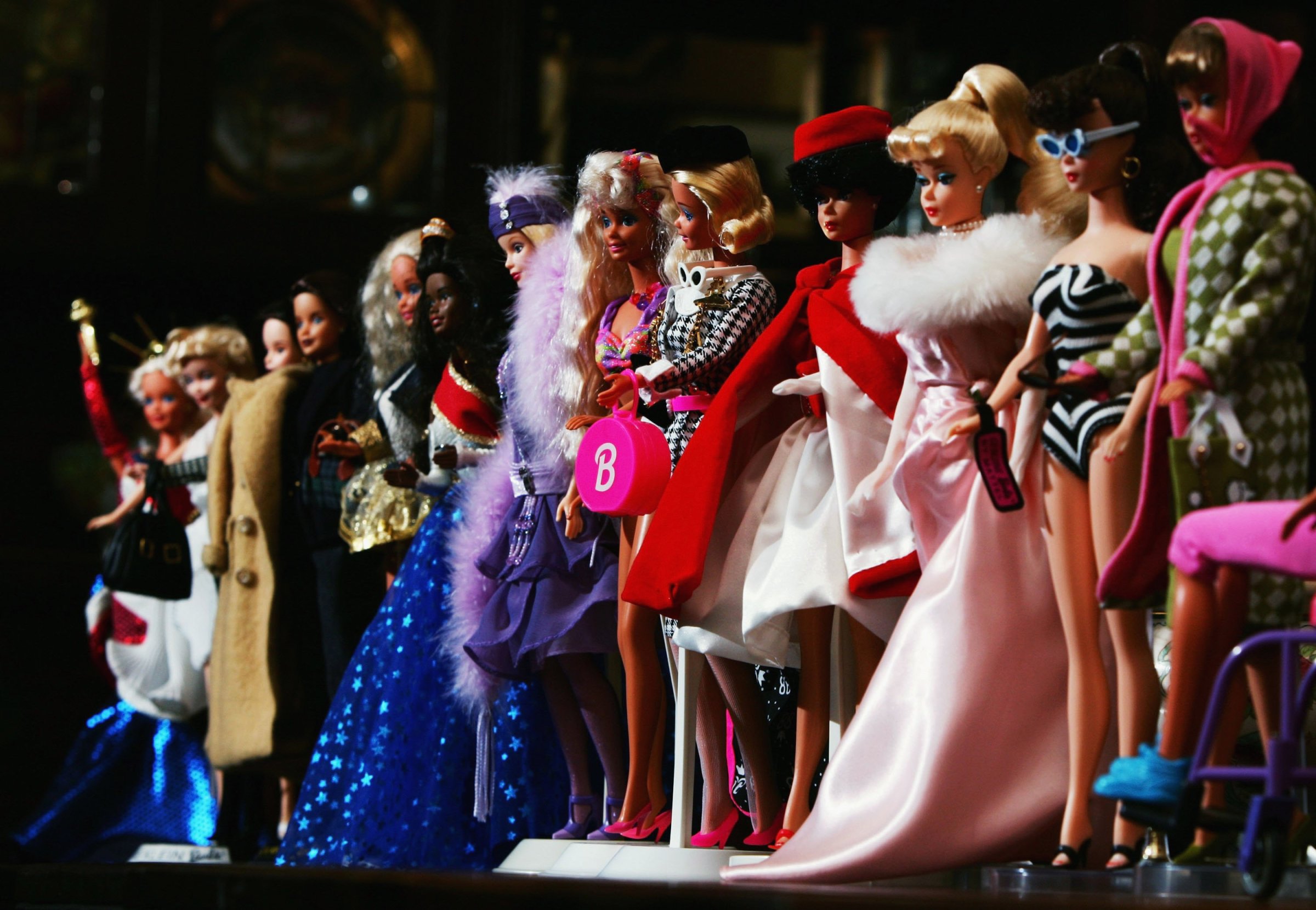
I loved my Barbies though I never asked for them.
My mother would line them up on the headboard of my princess bed. I still recall their chewed-up feet dangling over my eyes as I tried to sleep. When I woke up in the morning, the first thing I saw were her many blue eyes, her white smiles. Her impossible clothes that likely prompted my deep love of dresses, which I could not indulge in, being a fat girl.
Given my weight, and my olive skin—thanks to my half-Egyptian heritage—I of course looked nothing like Barbie. Yet as a burgeoning storyteller, I found in Barbie my first muse, my first heroine, even though with her rigid limbs, her overtly sexualized body, her small feet that couldn’t possibly hold that body up and her fixed smile, there were only so many stories I could tell. Still, when I first began dabbling with writing stories as a child, my protagonists all had her physical features. So much so that my sixth grade teacher, coincidentally Arab herself, took me aside and expressed concern. I didn’t listen. I loved Barbie still.
As a woman of mixed heritage who has struggled with body image issues all her life, I was excited when I first learned that Barbie was getting a body makeover, a racial makeover. I was scared, too. I often play a game with myself where I go back to my childhood when my body image issues were just emerging, and I imagine being presented with a female icon of another shape or shade—either on TV or a doll in my own hands. Would it have changed me? Would it have changed the stories I told through Barbie and thus to myself? Would I have valued the things I valued, worshipped blonde women as a child, become obsessed with dresses, Olivia Newton-John and Christie Brinkley? Would it have changed my own story? Would it have saved me from a lifetime of struggle with my own form, with feeling like an outsider?
Thursday morning, I scrolled through the many iterations of the new Barbie in all her newfangled shapes and shades and hair textures, at once hopeful and afraid. At first, I felt comfort at the sight of her familiar face, her poised hands. There was my old toy. One of the first girl-shaped keys to my imagination. But then I saw that her eyes were still the same. Her hands were still stiff and pose-y, like she was about to present a game show prize or do ballet, an impossibility with her still too small and precarious feet. Her arms were still rigid and creepily unbendable. Her smile was still vapid and fixed. Her eyes weirdly blank and starry.
That’s when I recalled the pink box in which she came and how every story I playfully performed with her, like a stiff-limbed marionette in my small hand, was inevitably a commercial version of a fairy tale—the one that ends in a kiss. Her form insisted upon it.
The protagonist of my novel, 13 Ways of Looking at a Fat Girl, Lizzie, struggles to lose weight and become Barbie thin. She believes that, by changing her body, she will transform herself. Her realm of possibility will broaden. She will be happy, she will be different. Her story will change.
Lizzie does change her body. She even changes her name. She transforms herself into someone who can, though not without difficulty, wear the Barbie dresses I so coveted as a chubby child. And yet, even though she attains physical transformation, she still encounters the same demons. She cannot escape her problematic self.
When I look into the still vacuous eyes of the new “fat” Barbie, I see that Barbie can’t escape herself either, regardless of changes made to her height, waist, hips and skin tone. (Though I do love her new blue hair). Like my own protagonist, Lizzie, Barbie cannot transcend what she is composed of—not molded plastic, but rather the anxieties, desires, and dreams of her makers, which invite a kind of impossible happily-ever-after narrative, narrow and eerily dreamy and irresistible at the same time. Barbie will always be Barbie.
But in as much as she appears to be an immoveable icon, locked in her own pink box, she is also a toy. And thus still a powerful key to the imagination. She was and always will be a story prompt. And with her unreal features, however implausible and lunatic in their construction, a warped window into a fictive world.
So maybe change is possible after all. Not perhaps for Barbie, trapped as she is in her hollow, plastic persona. Nor can it be sparked by her corporate creators. Instead, I look to those who play with her. The children who are at this very moment casting new Barbie in their own narratives, their own playtime scenarios. My hope is that the children who play with Barbie now, children who are made dreamy by her dreamy blue hair, who are now hesitant to call fat Barbie “fat,” children with a more culturally evolved awareness of beauty and health, of greater narrative possibilities for girls, will bend Barbie to their own shapes, ones that escape the pink box. I only hope she can accommodate them.
More Must-Reads from TIME
- Donald Trump Is TIME's 2024 Person of the Year
- Why We Chose Trump as Person of the Year
- Is Intermittent Fasting Good or Bad for You?
- The 100 Must-Read Books of 2024
- The 20 Best Christmas TV Episodes
- Column: If Optimism Feels Ridiculous Now, Try Hope
- The Future of Climate Action Is Trade Policy
- Merle Bombardieri Is Helping People Make the Baby Decision
Contact us at letters@time.com